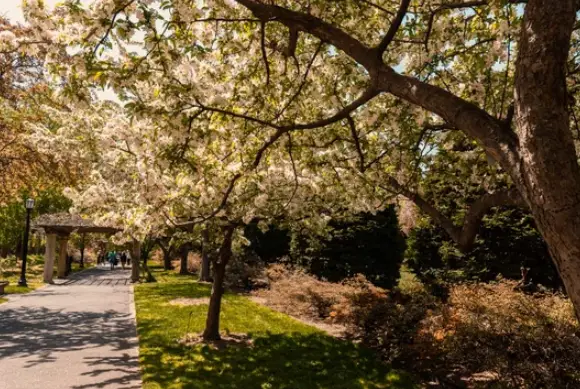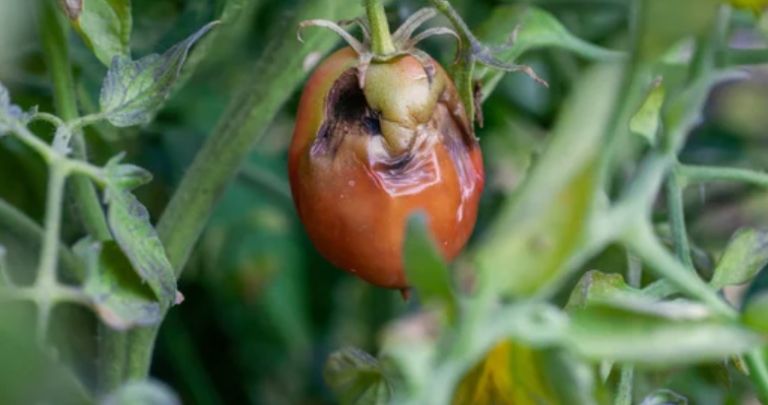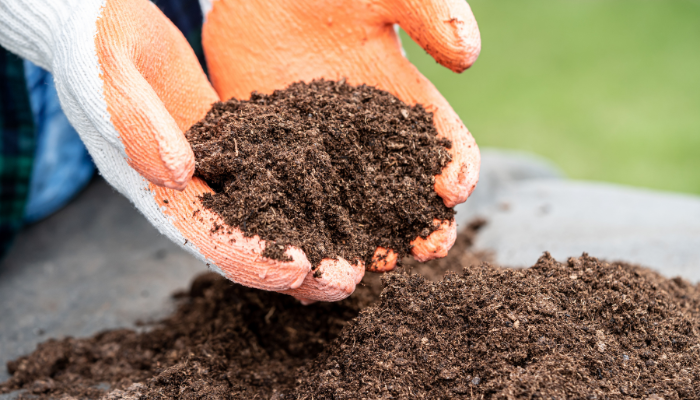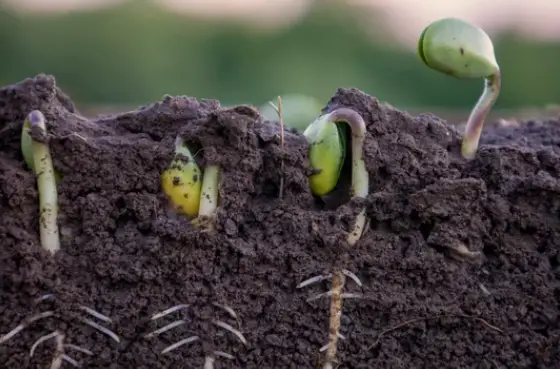What Growing Zone is Upstate NY? Knowledgeable Answer
If you’re a gardener or a farmer in Upstate NY, you may be wondering what growing zone you’re in. Understanding the growing zone is essential for selecting the right plants and ensuring they thrive in your area. The USDA Plant Hardiness Zone Map is the standard tool used to determine the growing zone for a particular region.
Upstate NY is a large region that encompasses a variety of climates and landscapes. As a result, the growing zones in Upstate NY vary widely. According to the USDA map, Upstate NY ranges from Zone 3a to Zone 7a. The area around the Great Lakes tends to be milder, while the Adirondack Mountains experience colder temperatures and more snow. Elevation and proximity to large bodies of water also play a role in the winter extreme low temperature variance seen on the map.
Knowing your growing zone is crucial to selecting the right plants for your garden or farm. When you choose plants that are suited to your growing zone, they are more likely to thrive and produce a bountiful harvest. With the right information, you can make informed decisions about what to plant in your garden or farm and increase your chances of success.

Understanding Growing Zones
If you’re planning on growing plants in Upstate NY, it’s important to understand what growing zones are and why they matter. Growing zones, also known as hardiness zones, are determined by the United States Department of Agriculture (USDA) and are based on the average minimum temperature in a given area.
The USDA has divided the United States into 13 different growing zones, with each zone having a range of temperatures that plants can tolerate. The higher the number of the zone, the higher the temperature range. For example, Zone 1 has an average minimum temperature of -60 to -50 degrees Fahrenheit, while Zone 13 has an average minimum temperature of 60 to 70 degrees Fahrenheit.
Upstate NY falls within Zones 3b to 7a, according to the USDA Hardiness Zone Map. This means that the average minimum temperature in this region can range from -35 to 10 degrees Fahrenheit. However, it’s important to note that elevation and proximity to large bodies of water can also play a role in the winter extreme low temperature variance seen on the map.
Knowing your growing zone is essential when selecting plants for your garden. Plants that are not suited for your growing zone may not survive the winter or may require extra care to thrive. When selecting plants, be sure to check the plant’s hardiness zone requirements to ensure it is suitable for your growing zone.
Some common plants that thrive in Upstate NY’s growing zones include:
- Trees: Maple, Oak, Birch, Pine, Spruce, and Fir
- Shrubs: Rhododendron, Azalea, and Hydrangea
- Perennials: Coneflower, Black-eyed Susan, Daylily, and Hosta
By understanding your growing zone and selecting plants that are suited for your region, you can create a beautiful and thriving garden in Upstate NY.
Climate of Upstate New York

When it comes to determining the growing zone of Upstate New York, it’s important to consider the region’s unique climate. Upstate New York experiences a humid continental climate, which is characterized by cold winters and warm summers.
The USDA Plant Hardiness Zone Map is a useful tool for determining the appropriate plants to grow in a given area. Upstate New York falls into USDA Hardiness Zones 3a to 6b, with the northernmost regions being the coldest.
Here is a breakdown of the USDA Hardiness Zones for Upstate New York:
| Zone | Temperature Range |
|---|---|
| 3a | -40°F to -35°F |
| 3b | -35°F to -30°F |
| 4a | -30°F to -25°F |
| 4b | -25°F to -20°F |
| 5a | -20°F to -15°F |
| 5b | -15°F to -10°F |
| 6a | -10°F to -5°F |
| 6b | -5°F to 0°F |
It’s important to note that these temperature ranges are just a starting point and that other factors, such as soil type, sun exposure, and precipitation, can also affect plant growth.
When planning your garden in Upstate New York, it’s important to choose plants that are well-suited to the region’s climate. Some plants that thrive in Upstate New York include:
- Apples
- Blueberries
- Grapes
- Peonies
- Hostas
- Daylilies
By choosing plants that are well-suited to your climate, you can ensure a successful and bountiful garden.
Growing Zone Classification in Upstate New York
If you’re planning to start a garden or grow plants in Upstate New York, it’s important to know the growing zone classification for your location. The United States Department of Agriculture (USDA) has created a map that divides the country into 13 zones based on average annual minimum temperatures.
According to the USDA map, Upstate New York is divided into zones 3a to 7a, with the northern regions being colder than the southern regions. This means that the plants that can be grown in Upstate New York will vary depending on your specific location.
Here is a breakdown of the different zones in Upstate New York:
- Zone 3a: This zone covers the northernmost parts of Upstate New York, including the Adirondack Mountains. The average annual minimum temperature in this zone is between -40 to -35 degrees Fahrenheit. This zone is challenging for gardening, and only a few hardy plants can survive the extreme cold temperatures.
- Zone 4a: This zone covers the central and western parts of Upstate New York, including the Finger Lakes region. The average annual minimum temperature in this zone is between -30 to -25 degrees Fahrenheit. This zone is still challenging for gardening and requires cold-hardy plants.
- Zone 5a: This zone covers the eastern part of Upstate New York, including the Hudson Valley. The average annual minimum temperature in this zone is between -20 to -15 degrees Fahrenheit. This zone is more suitable for gardening, and a wider variety of plants can grow.
- Zone 6a: This zone covers the southern part of Upstate New York, including the southern tier. The average annual minimum temperature in this zone is between -10 to -5 degrees Fahrenheit. This zone is ideal for gardening, and many plants can grow successfully.
- Zone 7a: This zone covers the southernmost parts of Upstate New York, including New York City. The average annual minimum temperature in this zone is between 0 to 5 degrees Fahrenheit. This zone is the warmest in Upstate New York and is suitable for growing a wide variety of plants.
It’s important to note that elevation and proximity to large bodies of water can also affect the winter extreme low temperature variance in Upstate New York. Therefore, it’s always recommended to consult with a local gardening expert to determine the best plants to grow in your specific location.
Plants Suitable for Upstate New York’s Zone
If you are planning to grow a garden in Upstate New York, it is important to choose plants that are suitable for the region’s growing zone. Upstate New York is in USDA hardiness zones 3a to 6b, which means that the average minimum winter temperature ranges from -40°F to 0°F. Here are some plants that are suitable for Upstate New York’s zone.
Fruit Trees
Fruit trees are a great addition to any garden. They provide shade, beauty, and of course, delicious fruit. Some fruit trees that are suitable for Upstate New York’s zone include:
- Apple trees (Malus spp.)
- Cherry trees (Prunus spp.)
- Peach trees (Prunus persica)
- Pear trees (Pyrus spp.)
- Plum trees (Prunus spp.)
When planting fruit trees, it is important to choose a variety that is adapted to your region’s climate. You should also consider the soil type, drainage, and sunlight requirements.
Vegetables
Growing your own vegetables is a great way to save money and eat healthy. Some vegetables that are suitable for Upstate New York’s zone include:
- Broccoli
- Cabbage
- Carrots
- Cauliflower
- Kale
- Lettuce
- Peas
- Radishes
- Spinach
When planting vegetables, it is important to choose a variety that is adapted to your region’s climate. You should also consider the soil type, drainage, and sunlight requirements.
Flowers
Flowers add color and beauty to any garden. Some flowers that are suitable for Upstate New York’s zone include:
- Black-eyed Susan (Rudbeckia hirta)
- Coneflower (Echinacea purpurea)
- Daylily (Hemerocallis spp.)
- Iris (Iris spp.)
- Peony (Paeonia spp.)
- Phlox (Phlox spp.)
- Sedum (Sedum spp.)
- Yarrow (Achillea spp.)
When planting flowers, it is important to choose a variety that is adapted to your region’s climate. You should also consider the soil type, drainage, and sunlight requirements.
Challenges in Upstate New York’s Growing Zone
Growing plants in Upstate New York can be challenging due to the region’s unique climate and growing zone. The USDA hardiness map shows that Upstate New York has a wide range of growing zones, from 3a to 7b Gardening Know How. This means that certain plants that can grow in one area may not be suitable for another.
One of the biggest challenges facing Upstate New York’s growing zone is climate change. Warmer winters and heavier rainfalls can have a significant impact on the health of plants and crops Times Union. Farmers and gardeners alike must adapt to these changes by selecting plants that are more tolerant of extreme weather conditions.
Another challenge is the shorter growing season in Upstate New York. The region experiences a shorter growing season due to its northern latitude and cooler climate. This means that farmers and gardeners must be strategic in selecting crops that can mature within the shorter growing season.
In addition to climate and growing season challenges, Upstate New York’s growing zone can also present soil and pest challenges. Soil in the region can be acidic and low in nutrients, making it difficult for some plants to thrive. Pests, such as deer and rabbits, can also cause significant damage to crops and gardens.
Despite these challenges, Upstate New York’s growing zone also presents opportunities for farmers and gardeners. The region’s cooler climate and shorter growing season are ideal for certain crops, such as apples, cherries, and grapes. Additionally, the region’s unique growing zone can provide a diverse range of plants and crops for farmers and gardeners to experiment with and cultivate.
Tips for Gardening in Upstate New York

If you’re planning to start a garden in Upstate New York, it’s important to know your growing zone. The USDA Hardiness Zone Map is a useful tool to determine which plants are best suited for your area. Upstate New York is divided into zones 3b to 6a, with the northern regions being colder than the southern regions.
Here are some tips to help you get started with gardening in Upstate New York:
Choose Cold-Climate Plants
Since Upstate New York has a cold climate, it’s important to choose plants that can handle the low temperatures. Some cold-hardy plants that can thrive in this region include:
- Carrots
- Romaine lettuce
- Collard greens
- Spinach
- Broccoli
- Cauliflower
- Cabbage
- Peas
- Radishes
- Potatoes
Plant at the Right Time
It’s important to plant your garden at the right time in Upstate New York. The growing season can be short, so it’s important to take advantage of the warmer months. Plant cool-season crops in early spring, and warm-season crops in late spring or early summer.
Use Mulch
Mulch is a great way to keep your garden healthy and protect it from the cold. It helps to retain moisture, regulate soil temperature, and suppress weeds. Use a layer of organic mulch around your plants to keep them healthy and happy.
Water Your Plants Correctly
It’s important to water your plants correctly to ensure that they grow properly. Water them deeply and infrequently to encourage deep root growth. Avoid watering during the hottest part of the day, as this can cause the water to evaporate quickly and not reach the roots.
By following these tips, you can create a beautiful and thriving garden in Upstate New York.
Frequently Asked Questions
What is the planting zone for upstate NY?
Upstate NY is located in USDA Hardiness Zones 3a to 6a, with some areas in Zone 7a. The planting zone for your specific location will depend on factors such as elevation and proximity to large bodies of water. Knowing your planting zone can help you choose plants that are best suited for your area’s climate.
What is the recommended planting time for upstate NY?
The recommended planting time for upstate NY varies depending on the plant and your specific location. Cold-intolerant spring vegetables should be started indoors in February and planted outdoors after the last frost date. Summer vegetables should be started in spring and planted in May or June. For trees and shrubs, fall is generally the best time to plant.
What are some plants that grow well in upstate NY?
Some plants that grow well in upstate NY include apple trees, blueberries, strawberries, tomatoes, peppers, and herbs like thyme and rosemary. Native plants like coneflowers, black-eyed Susans, and butterfly weed are also well-suited to the area’s climate.
What is the difference between planting zones in NY state?
NY state can be divided into four distinct gardening zones: the Hudson Valley, Long Island, the Catskills, and Western NY. Each zone has its own unique climate and growing conditions. The Hudson Valley and Long Island have milder winters and longer growing seasons, while the Catskills and Western NY have colder winters and shorter growing seasons.
What are the benefits of knowing your planting zone?
Knowing your planting zone can help you choose plants that are best suited for your area’s climate. This can save you time and money by avoiding plants that are unlikely to thrive in your area. It can also help you plan your garden more effectively, ensuring that you plant at the right time and choose plants that will grow well together.
How can I determine my specific planting zone in upstate NY?
You can determine your specific planting zone in upstate NY by using the USDA Hardiness Zone Map or consulting with a local gardening expert. The map takes into account factors such as average annual minimum temperature and is divided into 10-degree F zones. It’s important to note that microclimates can also affect your specific planting zone, so it’s a good idea to observe your garden’s conditions and adjust your plant choices accordingly.








